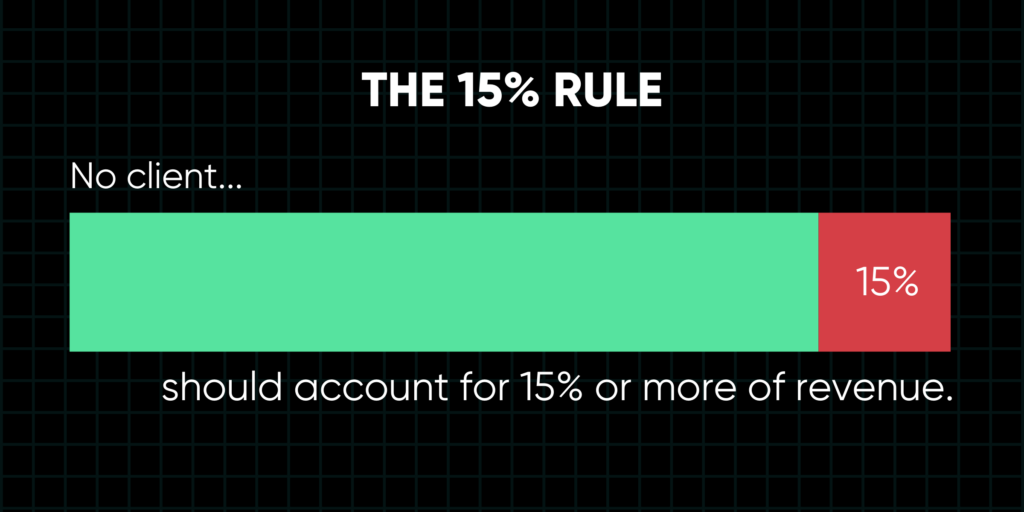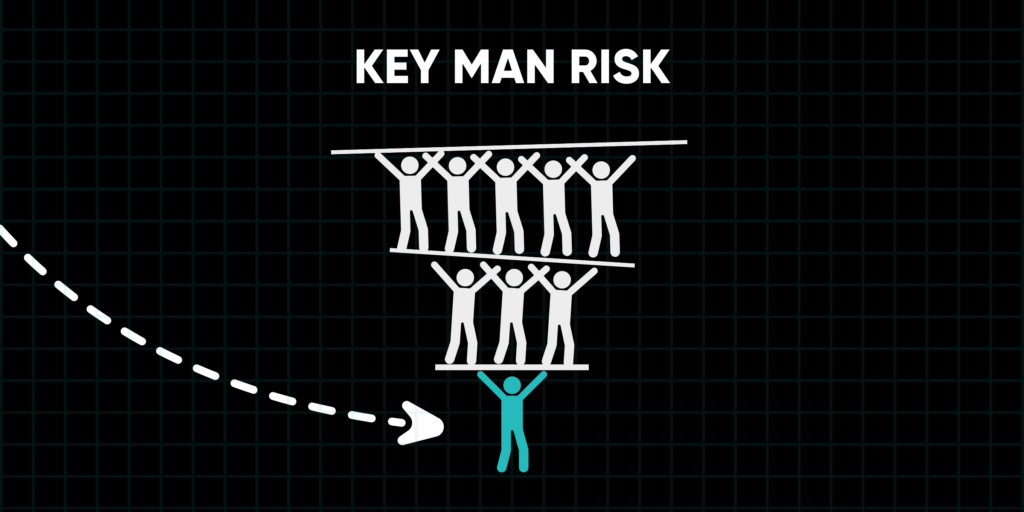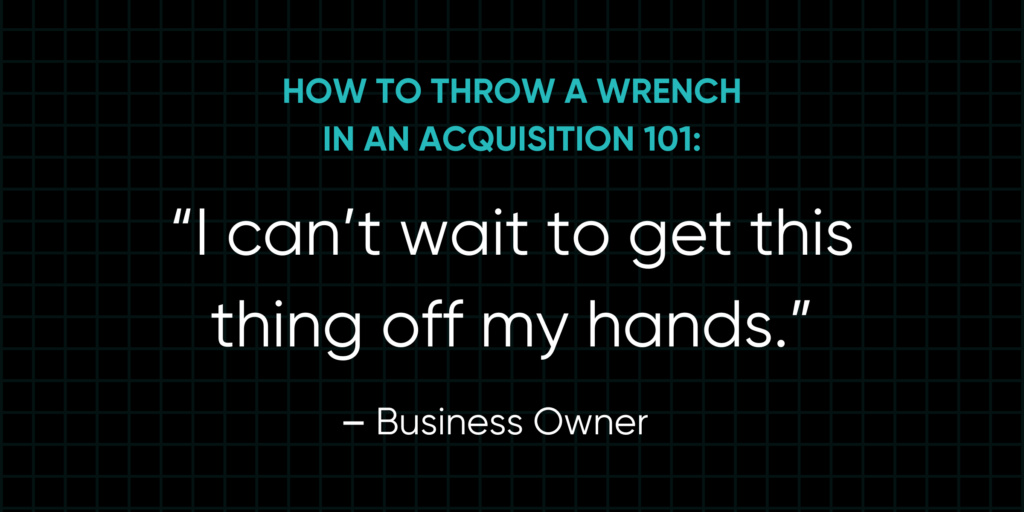
Hi Contrarians,
People often forget that a big part of owning a business is selling a business.
There’s no one perfect recipe for how a small business sells, but the ingredients that make one stand out are pretty clear-cut.
So preheat your ovens…
Below, learn what buyers have a palate for, build accordingly, and one day, if the time comes, you’ll be better positioned to sell.

Today in 5 minutes or less, you’ll learn:

1. Know your goals and numbers cold
Codie’s said she wouldn’t sell Contrarian Thinking for less than $100M today, and she’ll see how she feels in 10 years.
“I want to build this business up quite a bit,” as she puts it.
While we have no plans to sell, if you sit in on our team meetings you’ll often hear about what we’re working toward. Because the truth is, having an end goal in mind helps you move forward.
Often, we see people start or buy businesses thinking they’ll run them forever. But eventually, they get bored and miserable — and then they feel trapped with a biz they hate.
Why?
Because they didn’t design the business for a sale.
One of Codie’s first acquisitions, a stylist marketplace called Threads Refined, cost her around $200k and she couldn’t even sell it because it wasn’t designed as a sellable business. She had to shut it down.
Remember, the goal isn’t just owning a biz…
For most people, it’s owning a biz without having “Worked on the biz till the day they died” engraved on your tombstone.
To build for a sale, you have to figure out:
- Your industry’s revenue or profit multiples
- How much you want for your business
- How much your business is worth today
- Your plan to bridge the gap
Capiche?

2. Track and document EVERYTHING
At Contrarian Thinking we use a tool called Notion to:
- Build SOPs and automated processes
- Track our weekly and monthly performance and goals (across revenue and media metrics)
- Write anything and everything down
… So if Tanner (our video chief) wins the lottery and retires tomorrow, another person on the team can pick up his playbooks.
Documentation includes a P&L (profit and loss statement) and living dashboards for business unit performance. As a small biz owner — you should probably have these too.
Work under the assumption that one day an outsider (a buyer) might need to quickly get up to speed on your biz, so when that day comes, it’ll be easier to sell.

3. DI-VER-SI-FY
Diversifying is all about de-risking.
Healthy businesses often have diversified clients, products, and services.
Sure, there are exceptions for all of these, but see if you can survive the 15% rule where no one client makes up 15%+ of revenue.

For products or services, see if no one line item makes up the majority of revenue.
Reduce your risk profile and watch it become a selling point.

4. Recurrrrrrrrring revenue
Customers want to set it and forget it — and they’re willing to pay for services that make that easy for them.
Longer-term contracts and automated payments work for everyone from the Wall Street Journal and Netflix, to Contrarian Thinking’s community, to an HVAC or street cleaning biz, and everyone in between.
Recurring revenue offers you more scalable and predictable cash flow, which’ll serve you well if you ever try to sell.

5. Repeatable sales processes (build them)
Whatever the size or complexity of your business, you want to be able to show a buyer:
- How you sell
- Who you sell to
Sales playbooks. Growth plans. Marketing efforts. Customer data. Whatever your processes are, hone them till you can play them on repeat.
This will show a buyer you’ve got a business, not a job.

6. Cash-suck to cash-flow
Bottom line: Sellers want to buy a cash-flowing business (watch this to learn more).
Do everything you can to ensure that’s what you have on your hands. If possible, get paid upfront and often.
Cut expenses. Have debts in order. Build a diversified client base. Sell, sell, sell.
If somebody comes to buy your business and they have to float it for too long, they’re probably going to pay you less or simply not buy it.

7. Know your key man risk. Know it!
A business that’s completely reliant on its owner? Not a very sellable business.

Right now, for instance, Contrarian Thinking certainly has some key man risk. A buncha you are probably only subscribed to this newsletter because Codie told you about it, huh?
But our key man risk used to be a lot worse. We’ve addressed this through better management, hiring, delegation, and process-building.
Today, if Codie were to fall off the face of the earth, a lot could still get done.
With small biz buyouts, the question becomes: How do you keep these key people post-sale?
The answer: Incentives.
- Equity (% of the company)
- Profit sharing (% of profits)
- Bonuses
Reduce your key man risk, and improve your outlook for a sale.

8. Get to know your buyer
They come in all shapes and sizes, and just like you, their goals differ.
Strictly financial buyers may just want the cash flow your business offers.
Strategic buyers may be willing to spend more because of certain synergies.
Know who you’re building to sell to, and act accordingly.

9. Find a broker or intermediary
Who you work with to sell your business often depends on how large your business is.
Do you have less than $10M in sales? How about $10M-$50M? More than that? $100M? Good for you.
The answer will probably determine if you’re going to work with a small business broker, an M&A advisor, or an investment banker.
Whichever bracket you’re in, you should be interviewing them and making sure incentives align before you move forward.

10. Sell. The. Buyer.
Sell them on the dream of owning your business.
Use data to create a business plan that outlines why your biz is uniquely positioned to be a great purchase.
Outline your customer base, your product offerings, how you’ve diversified risk, why now makes sense, what your projections are for the next 1-3 years, and what the business’s opportunities are for growth.

Institutional investors, strategic buyers, MBAs, and everyday Main Street buyers are all seeing LOTs of deals all the time.
You have to make your story stand out.

11. Set the team up for success, too
Just as you have to sell the dream to a buyer, you also have to sell it to your own team.
Don’t tell them before it’s necessary, but once it is — they need to believe that they’ll be as good or better off without you.
You can safely assume a team is going to be uncomfortable by the news of their unknown future leadership.
So make sure you have plans:
- A plan for how to tell them (so they become excited about it)
- A plan for incentives or promotions (so they see how they benefit from it)
- A plan for the transition (so they can ease into it)
Sell the team on the dream.

12. Did your buyer do due diligence?
Say that 10 times fast.
Due diligence is all part of a broader process that can last up to ~12-18 months across:
- Preparing to sell the biz
- Marketing the biz
- Due diligence and deal closing
- A transitionary period
This due diligence process typically takes 60 days at a minimum.
Keep in mind: Negotiations will happen. Offers will shift. Questions will be asked. A lot of this will go through your broker or intermediary.
Here’s a due diligence checklist for buyers. You can use it to operate with a buyer’s eye and start playing chess while everyone else is playing checkers.
And remember, building and selling a business is far from a cakewalk.


SO not boring…
📘 Reminder: Want to be in the know when our new biz-buying course drops? Sign up here.
🤖 Woah: Our VC portfolio company Figure had some BIG news…





